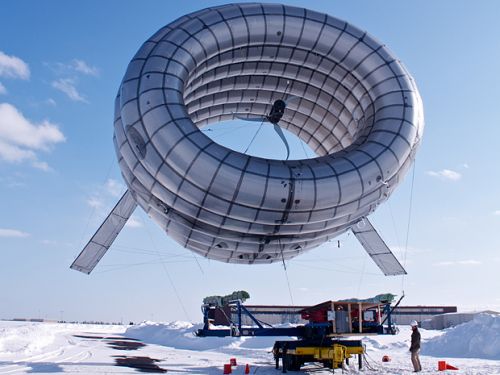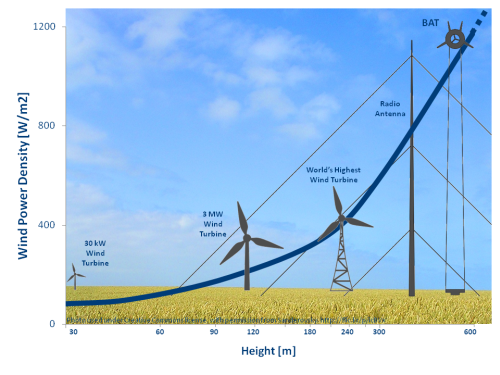We visualize wind turbine as tall tower with a huge fan mounted on it and fixed at some distant place. But we might have never imagined a wind turbine that floats in the air. Does it sound like a sci-fi movie subject? Surprisingly, it’s a reality being developed by MIT startup Altaeros Energies and will be seen floating in the sky above the city of Fairbanks and the power so generated will be used to power remote military sites and families residing off the grid that usually depend on expensive and pollution creating fossil fuels.
The giant airborne wind turbine is filled with helium, enabling it to float at high altitude of 1,000 feet above the ground for the next 18 months to harness wind currents that are steady and much stronger. The turbine is suitably named as The Altaeros BAT-The Buoyant Airborne Turbine and the pilot project for the first time integrates the aerospace and wind turbine technology together to making the airborne wind turbine a reality.
The Altaeros BAT consists of four main parts:
* Shell – made up of high quality industrial fabric and is filled with helium, that lifts and stabilize the turbine while hovering in the air.
* Turbine – traditional three-blade turbine, light in weight secured within the shell.
* Tethers – tethers are designed to be lightweight but strong and plays an important role in stabilizing the turbine during all weather conditions and to send power from the turbine to the base.
* Ground Station – build on a shipping container and consists of control system that works autonomously and power equipments.
The Altaeros BAT plans to provide wind energy at affordable prices to places with slow moving winds or require high investment in logistics. These Altaeros can function up to 600 meters and capable of producing twice as much energy as produced by conventional wind turbines of similar rate. The power that gets generated at high altitude are consistent, smooth and convenient to integrate into prevailing distant power systems.
The BAT prototype that is based on the technology used by industrial blimps has been tested in wind speed of 70 kilometer per hour and therefore estimated to easily withstand strong winds of hurricane levels or even stronger.
The company aims to supply power at low cost as $0.18 per kilowatt per hour, which is almost half the price of off grid supplies in Alaska. The power capacity for each BAT is 30 kilowatts, which is enough to power 12 houses. Apart from providing renewable energy, the company says that in the future, it can also be used for lifting equipments related to communications, meteorological or cellular device and other sensing apparatus, without hindering the performance of the turbine. The Altaeros system can regulate the height and alignment of the turbines in conditions like changing winds to maximize the output.
The benefit of Altaeros technology will even be extended to remote power and microgrid market, worth US $17 billion. The remote island, mining sites, military bases dependent on CO2 producing diesel generators to fulfill their energy needs will be benefited with this low cost, renewal source of technology. Everyone is definitely curious to know how does it technology fairs and soon we might be seeing such floating wind turbines being deployed in other area and economically solving the power issues prevailing in many parts of the planet.





